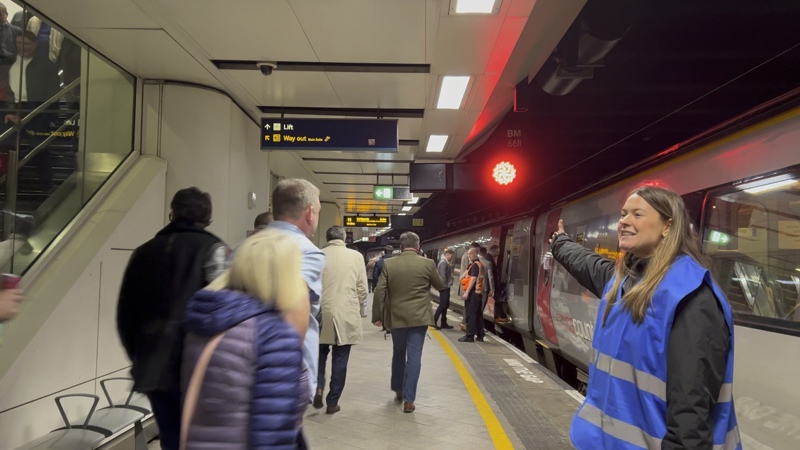
There were just under 450 million journeys made by passengers between July and September this year, a 9% increase on the same quarter in 2023, according to the Office of Rail and Road, which has released its quarterly statistics. There was further good news for operators as revenue also saw an 11% uplift, bolstering hopes that the rail network is beginning to return to its pre-covid levels.

There were just under 450 million journeys made by passengers between July and September this year, a 9% increase on the same quarter in 2023, according to the Office of Rail and Road, which has released its quarterly statistics. There was further good news for operators as revenue also saw an 11% uplift, bolstering hopes that the rail network is beginning to return to its pre-covid levels.
Passenger numbers post-covid continued to be boosted by the success of the Elizabeth Line. Passenger numbers on the network have been included on the statistics since 2022, before the pandemic hit and with the Elizabeth Line excluded, there were 372 million journeys in the quarter – 83% of total journeys made. However, once statistics from the Elizabeth Line were included, the relative usage was 97% compared to figures pre-pandemic.
The updated timetable and an increase in services due its introduction of its class 756s on the Valley Lines has contributed in part to Transport for Wales’s quarterly performance. The operator saw a 25% percentage change from the same period in 2023 with eight million people travelling on its network. Along with TransPennine Express, it recorded the highest percentage change between July and September.
Revenue growth within the sector has remained stagnant since the pandemic ended as operators contended with strikes and delayed renewals across the network, alongside shifts in how passengers use the railways.
Commuting saw the highest levels of revenue growth across the network, increasing by 12% year-on-year. The Great British Railways Transition Team estimates that commuting is now up to 89% of its pre-pandemic levels.
GBRTT’s Customer and Revenue Growth Director Suzanne Donnelly said: “It’s encouraging to see the revenue growth in commuting, which supports the post-pandemic recovery in this sector.”
Donnelly also highlighted the lack of industrial action as a contributing factor.
“The quarter seeing no industrial action has also protected revenue growth.”, she added.
However, the figures as well as the recent the operator performance statistics that ORR also released has brought into sharper focus the role of public ownership as it was revealed that LNER and Northern were two of the least reliable operators in the period. Both are publically owned. Northern has also recorded declining punctuality and reliability statistics over the last year.
“The latest Office of Rail and Road data shows public and private train companies continue to face the same performance challenges. Simply changing who runs the trains won’t deliver more reliable services for passengers.”, commented Andy Bagnall, Rail Partners chief executive.
Hannah Moxon, Director of External Affairs at Rail Partners, added: "There has been a welcome boost in passenger numbers in the last few months, but rail usage and revenue still fall short of pre-pandemic levels.
"Private sector operators have a track record of delivering growth in passenger numbers to reduce subsidy, so it is counter intuitive to start removing them from the system without the government first setting out how, through Great British Railways, they will reform the railways to improve the passenger experience and reduce the burden on the taxpayer."
Login to continue reading
Or register with RAIL to keep up-to-date with the latest news, insight and opinion.


















Login to comment
Comments
No comments have been made yet.